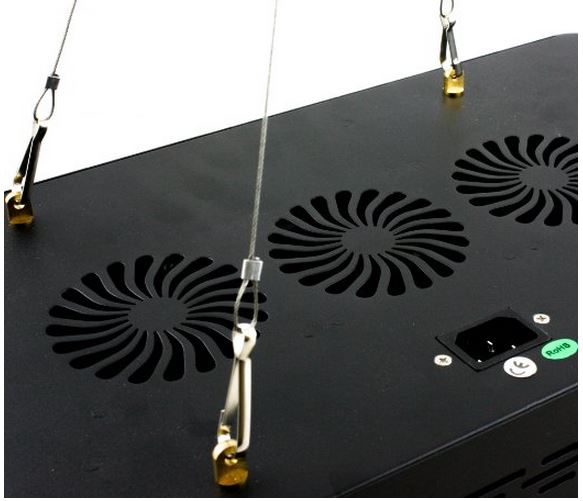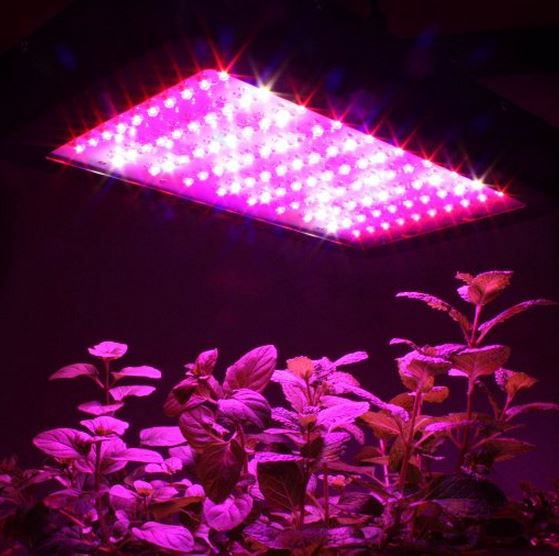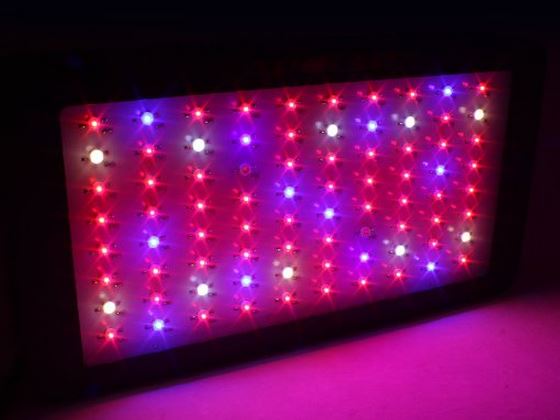Apollo Horticulture GL100LED 300W LED Grow Light Review
Growing with LEDs has become increasingly popular over the last several years, with new advancements in technology, panels that were once extremely expensive have come down substantially in price. One of those is the Apollo Horticulture GL100LED 300w LED Grow Light. Although we can’t say it’s the absolute best on the market, it’s a great choice for small scale hobby growers who want to experiment with LED growing. We decided to take a closer look and review what it has to offer.
Spectrum
The GL100LED provides a balanced spectrum of light for proper photosynthesis through all stages of growth including veg, flower, and even seedling or clone stage. There are two different modes of growing that you can select the panel to operate in. The vegetative growth mode uses a spectrum of 430-475nm, 620-630nm, 660nm and White. The flowering mode uses a spectrum of 430-475nm, 620-630nm, 660nm, 730nm and White.
As you can see, the only real difference between the two stages is the addition of the 720nm spectrum in the flowering mode. This specific spectrum has been shown to souble the rate of photosynthesis when it’s paired with another spectrum of 650nm to 670nm, which the GL100LED has. This is what has been called the “Emerson Effect” or the “Mars Effect”.

Size and Coverage
The panel measures 15.75″ long x 8.20″ wide x 2.5″ thick and weighs under 10 pounds, making it a piece of cake to maneuver when you’re setting it up or moving it around.
For seedlings a clones, keep it around 20-24 inches away from your plants. For vegeative growth keep it around 18-20 inches away from your plants. For flowering, you’ll want to keep it around 18 inches away from the canopy. If you see stretch, move it closer. If you see a bleaching effect (unlikely), move it further away from your plants. As for coverage, expect an area of about 2 x 3 feet for vegging/blooming, or 3 x 3 feet for seedlings/clones.
Chips
The Apollo Horticulture GL100LED uses a blend of one hundred 3 watt Epistar chips. Although Epistar isn’t the world-renowned Cree or Bridgelux brand, it’s an adequate choice for this price point. It should also be noted that it’s being advertised as a 300 watt panel since there is an assortment of 100 x 3w chips.
However, these chips aren’t driven to their full capacity. If they were, they would immediately or quickly fail. Because of this, the light only uses 170 watts from the wall, which is actually a good thing since it will end up costing less in operational costs with the rate of electricity at an all time high.
Heat Management and Cooling
Internally, the GL100LED is equipped with three ultra quiet cooling fans that work simultaneously to effectively cool the heat to a minimum. Additionally, there are several heat sinks that are designed to properly dissipate heat so overheating is never an issue.
The working temperature range of this panel is anywhere from 0 to 131 degrees Fahrenheit, but it’s best to keep your growing area within a normal range of 50-85 degrees. It should be also noted that the humidity should be kept between 0 and 95 percent. Try not to exceed close to 100 percent humidity by installing a proper ventilation into your indoor growing environment.

Easy to Use
If you haven’t grown with LED before, you may not know how easy it is. No ballast, cool tube, or expensive bulb changes are necessary. Just hang it with the included stainless steel hanging kit, plug in the power cord to your wall outlet, and you’re good to go. The GL100LED is rated for 50,000 hours of growing, so it will be over a decade before you’ll need to purchase an additional light if this one suits your needs.
Final Thoughts
To conclude, we’d say that the Apollo Horticulture GL100LED 300w LED Grow Light is a great panel for under $150. If your budget is tight and you don’t have several hundred dollars to invest in a light with, this panel may be a great choice for you. Don’t expect it to perform like a 600 watt HID, but more in the range of a 400 watt HID when properly dialed in.
If you’ve had the opportunity to work with the GL100LED, let us know what you think about it in our comments section below.







